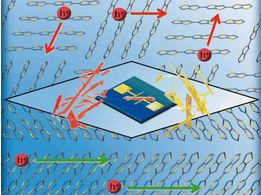Demand for large-scale displays, sensor arrays, lighting panels, and photovoltaic modules is increasing. Therefore, new high-performance electronic materials that can be readily deposited over large areas using low-cost ambient deposition techniques are needed. Organic materials have attracted interest, due to their film-forming properties and the ability to control their physical characteristics through conventional wet chemistry.
The first commercial application of organic electronics has been displays based on organic light-emitting diodes (OLEDs). First used in high-end mobile phones, OLED displays can now be found in a wide range of handsets and in televisions. The present generation of OLED displays are hybrid organic/inorganic devices, with the OLED pixels driven by a backplane of silicon transistors. The long term goal is to create ultra-thin, flexible displays made completely from organic components. Solid-state lighting, photovoltaics, and bioelectronics are other areas of interest for the use of organic electronics.
Challenges facing the organic electronics community include the rational design of high-performance electronic materials, strategies for controlling molecular packing, the development of flexible thin-film encapsulants that offer comparable levels of protection and transparency to glass, and new methods for depositing and processing high-quality films.
A special issue of ChemPhysChem provides a snap-shot of the state of the art in organic electronics from international researchers in the areas of chemistry, physics, materials science, device engineering, and biology.
- Organic Electronics: Recent Developments,
John de Mello, John Anthony, Soonil Lee,
ChemPhysChem 2015, 16 (6), 1099–1100.
DOI: 10.1002/cphc.201500229
- Scpecial Issue: Organic Electronics,
ChemPhysChem 2015, 16 (6).




